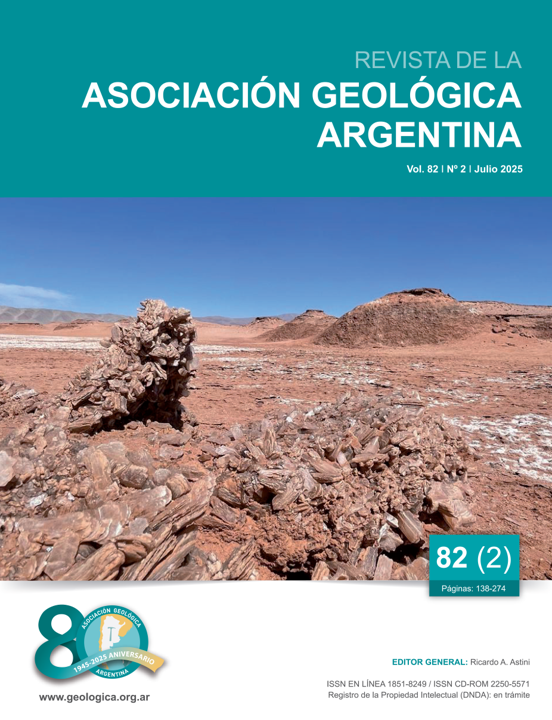Agates from the Uruguay River: Distribution, Abundance, and Characterization.
Main Article Content
Abstract
This study evaluates the potential of agates found within the Plio-Pleistocene deposits of Entre Ríos Province (Argentina) for use as ornamental stones. A total of 19 sediment samples were collected from quarry pits and natural outcrops along the Uruguay River and analyzed through grain size distribution and petrographic techniques. The studied gravels exhibit a near-Gaussian size distribution, with an average grain size of 25 mm, corresponding to coarse pebbles. The coarser fractions (>32 mm), including very coarse pebbles and cobbles - those most suitable for lapidary purposes - are most abundant between the towns of Santa Ana and Concordia. Agates (both whole and fragmented) constitute approximately 28% of the total gravel analyzed, although only 4.6% exhibit the quality and size necessary to justify commercial lapidary work. This corresponds to a grade of 60kg/m3, which increases significantly in stockpiles from deposits exploited for construction purposes, where gravel smaller than 50 mm has been removed. Petrographically, the most
common agates display concentric banding of chalcedony with one or two generations of crystalline quartz. Horizontally banded agates are less frequent, while spherulitic varieties are rare.
Article Details

This work is licensed under a Creative Commons Attribution-NonCommercial 4.0 International License.
Nota de copyright
Los autores conservan los derechos de autor y garantizan a la revista el derecho de ser la primera publicación del trabajo licenciado según una licencia de atribución Creative Commons que permite a otros compartir el trabajo con el reconocimiento de la autoría y de la publicación en la que se publicó por primera vez.
Declaración de privacidad
Los nombres y direcciones de correo electrónico introducidos en esta revista se usarán exclusivamente para los fines declarados por esta revista y no estarán disponibles para ningún otro propósito u otra persona.

